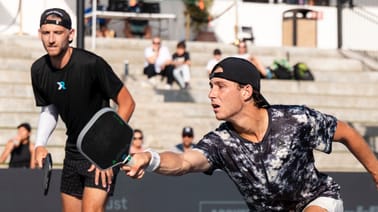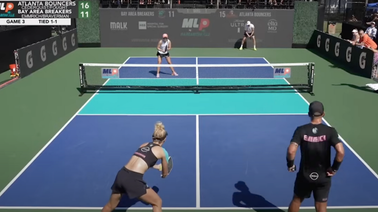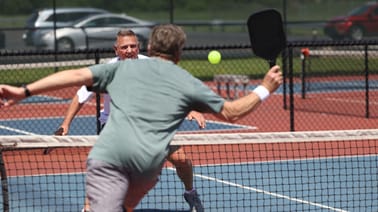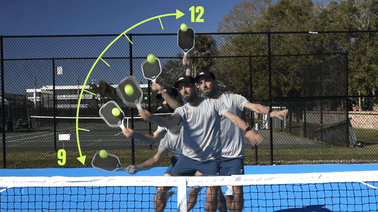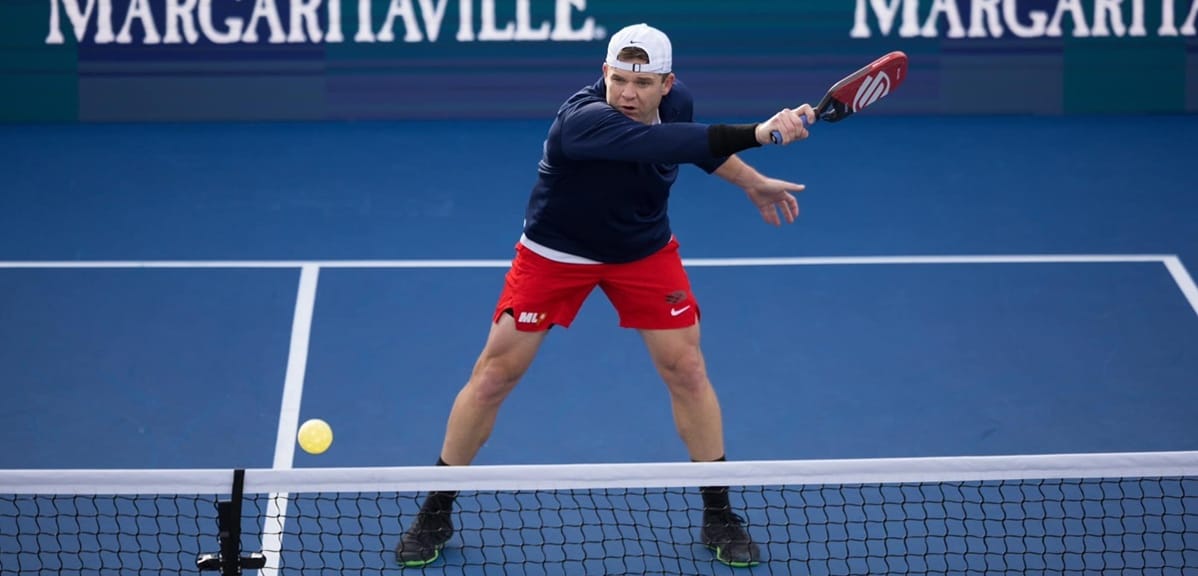
Pickleball, a sport that demands quick reflexes, agile movements, and lightning-fast reactions, places a premium on speed.
Whether you're a beginner looking to enhance your first step or an experienced player aiming to accelerate your game, speed training is the key – but it should go beyond simple things like wall drills.
The role of acceleration in pickleball
Acceleration, often referred to as the "first step," is the ability to explosively propel oneself forward, a crucial skill in reaching the ball, covering the court, and gaining a strategic advantage over opponents.
In pickleball, where rallies are fast-paced and every second counts, a quick first step can be the difference between a successful shot and a missed opportunity.
Therefore, speed training isn't just about raw velocity; it's about the ability to accelerate swiftly and efficiently.
Benefits of speed training for pickleball players
Improved Reaction Time: Speed training enhances your neurological pathways, allowing your brain to signal your muscles to move more rapidly.
This results in improved reaction time, a vital asset when responding to the unpredictable nature of pickleball rallies.
Enhanced Court Coverage: A faster first step means you can cover more ground on the court, reaching shots that might seem out of reach to slower opponents.
This increased court coverage not only improves your defensive game but also puts you in a better position for offensive plays.
Strategic Advantage: In the game of pickleball, where strategy and positioning are paramount, speed training provides a strategic advantage.
The ability to reach the ball quicker allows you to dictate the pace of the game, keeping your opponents on their toes.
Pickleballers: you play better if you hydrate better.

Better hydration starts with LMNT's perfect ratio. Their electrolyte drink mix is: 1000 mg sodium, 200 mg potassium, 60 mg magnesium. Everything you need, nothing you don't.
New LMNT Chocolate Medley features Chocolate Mint, Chocolate Chai, and Chocolate Raspberry and is designed to be enjoyed hot.
Check them out here to kickstart your winter hydration routine.
Speed training for beginners
For beginners entering the world of pickleball, speed training might seem like a daunting endeavor.
However, building a foundation for speed is a gradual process that combines specific exercises with an understanding of body mechanics.
Warm-up Routine: Begin each training session with a dynamic warm-up that targets the muscles involved in acceleration. Leg swings, high knees, and lateral shuffles are excellent warm-up exercises that prepare your body for the intensity of speed training.
Agility Drills: Incorporate agility drills into your routine to improve your footwork and coordination. Cone drills, ladder drills, and shuttle runs are effective in building the neuromuscular connections needed for quick and precise movements.
Sprint Intervals: Introduce sprint intervals into your training regimen. Short bursts of maximum effort followed by rest periods that mimic the stop-and-start nature of pickleball rallies, conditioning your body for the demands of the game.
Advanced speed training
As you progress in your pickleball journey, it's important to advance your speed training to match the increasing demands of the game.
Advanced speed training focuses on refining your acceleration technique and maximizing your speed.
Resistance Training: Incorporate resistance training to strengthen the muscles involved in acceleration. Resistance bands, sled pulls, and hill sprints add an extra challenge, helping to build power and explosiveness.
Plyometric Exercises: Plyometric exercises enhance your ability to generate force quickly. Box jumps, depth jumps, and medicine ball throws are effective in improving your reactive strength, a crucial component of rapid acceleration.
Technical Drills: Work on refining your technique through drills that properly reinforce it. Focus on the proper body positioning during the first step, proper weight distribution, and ensuring a low and explosive push-off to maximize acceleration.
A strategic approach to speed training
To fully harness the benefits of speed training, it's essential to adopt a strategic and holistic approach.
Balance with Endurance Training: While speed is crucial, endurance is equally important in pickleball. Balancing speed training with endurance exercises ensures you have the stamina to maintain a high level of performance throughout the game.
Rest and Recovery: Speed training places stress on your muscles and joints. Adequate rest and recovery are crucial to prevent injuries and allow your body to adapt to the demands of training.
During the maximal sprinting exercises you should incorporate a 1:5 work to rest ratio. Meaning for every one second of work, you should rest 5 seconds.
Also, be sure to incorporate rest days into your weekly schedule and prioritize proper sleep and hydration.
Sports-Specific Training: Mimic the movements of pickleball in your training routine. Incorporate drills that replicate the quick lateral movements, sudden stops, and explosive accelerations required during a game.
Speed training is a game-changing aspect of pickleball that can elevate your performance to new heights.
Read Next: Move With Your Partner
Whether you're just starting or looking to refine your acceleration technique, incorporating targeted speed training into your routine will undoubtedly give you the edge you need on the pickleball court.
So lace up your shoes, embrace the need for speed, and watch as your game takes on a whole new dimension of agility and precision.
We send our newsletter subscribers valuable pickleball tips like these three days a week. Up your game by subscribing now.


